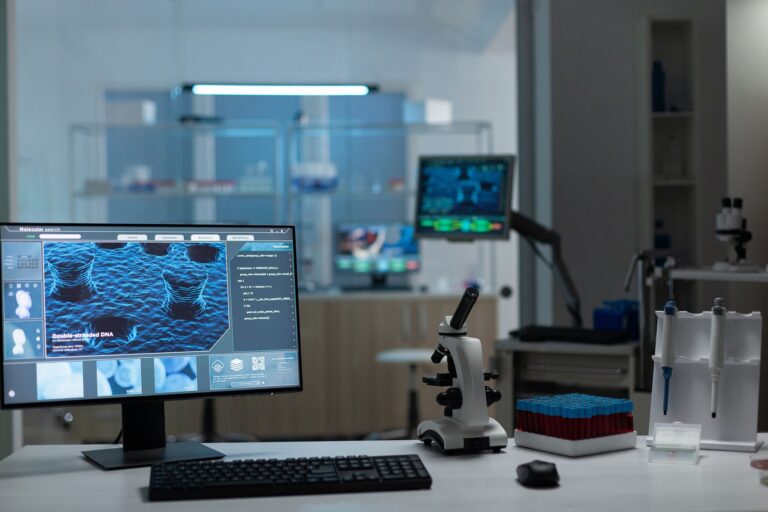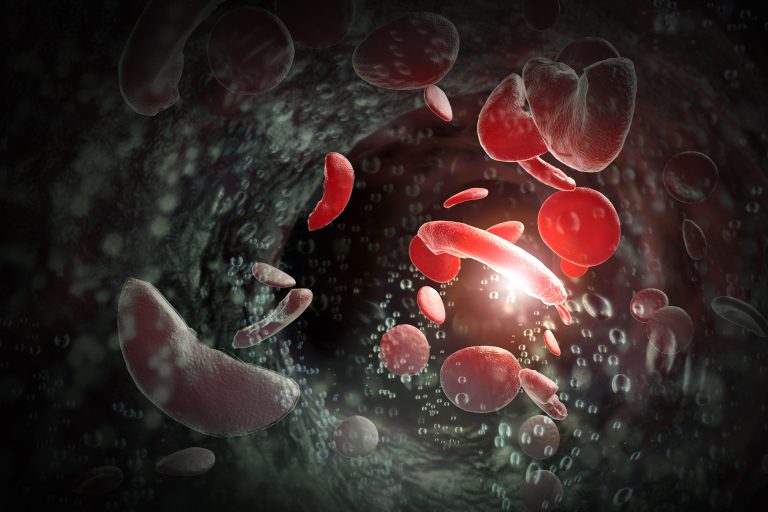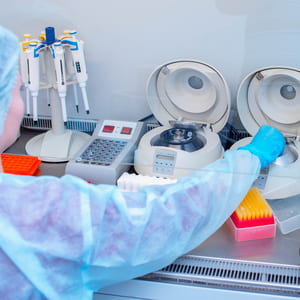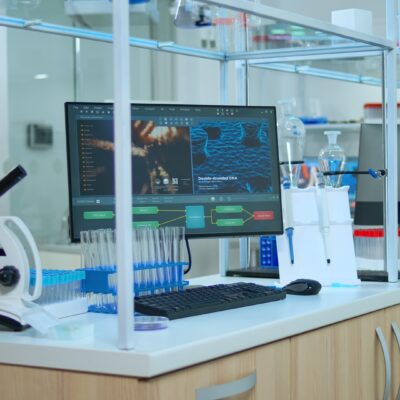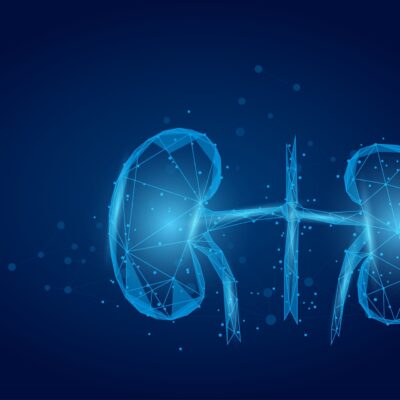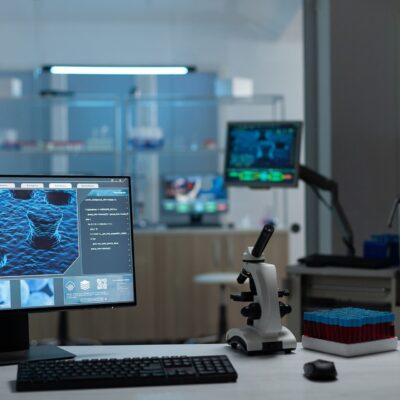Introduction to clinical trials
Clinical trials are typically divided into Phase I, Phase II, Phase III, and Phase IV. Each has a specific purpose – from initial safety testing in a small group of healthy volunteers during Phase I, to the large-scale assessment of treatment effectiveness in Phase III. Once a treatment is approved and on the market, Phase IV trials monitor long-term effects. Understanding these phases helps us appreciate the comprehensive testing process and the rigorous standard. It must be met before a new treatment can be made widely available. Thus, the journey from laboratory to pharmacy shelf is a combination of scientific evaluation and regulatory scrutiny, ensuring the highest level of patient safety. To truly comprehend the significance of clinical trials, we must acknowledge their role. They are the cornerstone of medical progress, paving the way for new treatments. These meticulously designed studies test new treatments and drugs for safety and efficacy.
Before these treatments become widely available, they must go through clinical trials. By participating in a trial, individuals contribute to the development of new therapies. These therapies may improve or save countless lives. Trials are typically divided into phases, each with a specific aim. These range from initial safety assessments to comparisons with standard treatments. Strict regulatory standards and ethical guidelines protect participant safety and rights. Safety and participant rights are a top priority at all times. Informed consent is a key part of the clinical trial process for potential participants. This consent provides a clear understanding of what participants can expect. Armed with knowledge, participants can make empowered decisions about their involvement. They can understand the concept of clinical trials and their profound importance.
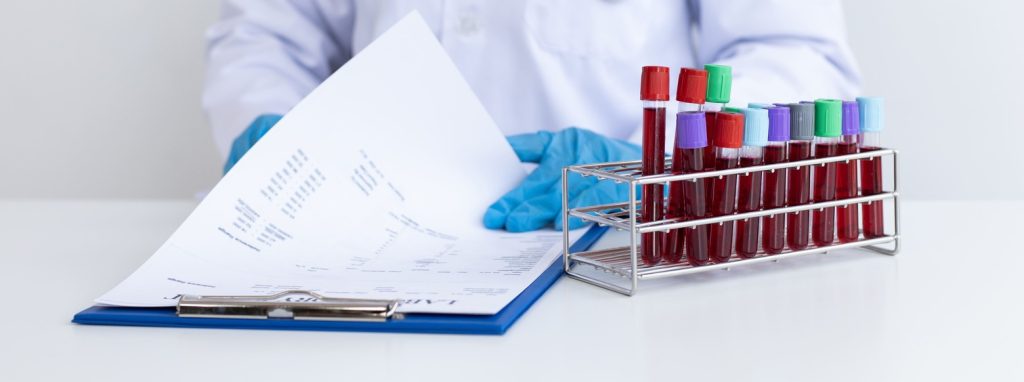
The role of clinical trials in medical advancements
Building on the fundamental concept of clinical trials, it’s clear that the journey from a novel medical idea to a breakthrough treatment is both intricate and robust. Clinical trials represent the bridge between innovative research in the laboratory and real-world patient care. The implications of this are monumental – not only do these trials pave the way for advancements in medicine. They also open up possibilities for patients to access the latest treatments that are not yet available on the market. This could encompass anything from life-saving drugs to revolutionary therapies that enhance the quality of life for individuals with chronic conditions. Underpinning the clinical trial process is a hierarchy of phases. Each is designed to answer specific research questions. Phase 1 focuses on safety, determining the side effects and the best dose of a new treatment. Phase 2 is centered on efficacy. If is successful, they move on to Phase 3, which compares the new treatment with the standard of care. Finally, Phase 4 occurs after a treatment has been licensed and marketed, monitoring long-term effects.
The journey of a drug through these phases is meticulous and highly regulated. It is crucial in maintaining public trust and participant protection. For those looking to contribute to the future of healthcare, understanding the significance and structure of clinical trials is essential. It’s not just about individual health, but about contributing to a wider societal benefit. Prospective trial participants must be equipped with thorough information, provided through the process of informed consent, ensuring they are fully aware of the risks, benefits, and the nature of the trial before they agree to take part. By highlighting the significance and safely regulated environment of clinical trials, we aim to educate readers and possibly inspire them to consider participation. Whether it’s to gain access to new treatments or to help advance medical science, the role of volunteer participants cannot be overstated. Clinical trials are, without doubt, a key force driving forward the evolution of medicine, and by participating, individuals can contribute to a legacy of health improvements for future generations.
Types of Clinical Trials
There are various types of clinical trials, such as: preventive, screening, diagnostic, and treatment trials. It is crucial to understand how each plays a pivotal role in advancing medical knowledge and patient care. Preventive trials aim to thwart diseases before they occur. It is tapping into the development of vaccines or lifestyle modifications to reduce risk. Screening trials focus on detecting health conditions at their nascent stages, thus facilitating early intervention. Diagnostic trials enhance the precision with which diseases are identified. It allows for more targeted treatment approaches. Finally, treatment trials are the backbone of clinical research. They rigorously examine the efficacy of new drugs, medical devices, and procedures. Together, these trials form a cohesive framework that underpins the continuous evolution of medical practice. They are offering hope for improved outcomes and innovative therapeutic strategies.
Structure of clinical trials
Phase 1
The process of determining how the body reacts to a new medication.
The primary focus of Phase 1 trials is to assess the safety and tolerability of a new drug or treatment in humans. This involves closely monitoring participants for any adverse effects and determining the maximum dose that can be administered without causing harmful side effects.
- Determination of the No-Observed-Adverse-Effect Level (NOAEL). In this phase, researchers aim to find a dose at which no adverse effects are observed in participants. This information is critical for establishing a safe starting dose for the clinical trials.
- Assessment of Acute Side Effects. The immediate response of participants to the drug is monitored to identify any acute side effects that may occur shortly after administration. Understanding these effects is essential for ensuring the immediate safety of the participants.
- Monitoring of Vital Signs. Regular checks of blood pressure, heart rate, and temperature are performed to detect any physiological changes that might indicate the drug’s impact on the body.
- Blood and Urine Analysis. Frequent blood and urine sampling allows researchers to measure how the drug is affecting the organs and whether any abnormal by-products are present.
- Dose Escalation Study. Starting at a low dose, researchers gradually increase the dose for subsequent groups of participants to find the highest dose that can be administered safely without significant side effects.
- Pharmacodynamic Evaluation. Alongside pharmacokinetics, the effect of the drug on the body is studied, taking into account various biomarkers and how they change in response to the drug.
- Evaluation of Drug-Drug Interactions. If participants are likely to be on other medications, potential interactions are assessed to ensure that the new drug does not adversely interact with common medications.
- Multiple-Dose Studies. After single doses are tested, researchers examine the effects of multiple doses to see how the drug accumulates in the body and to further assess its tolerability over time.
- Documentation of Adverse Events. All adverse events are meticulously recorded, with an evaluation of their severity, frequency, and whether they are dose-related. It helps to better understand the risk profile of the new drug.
The intimate setting of phase 1 of clinical trials is crucial to their success. It is important to understand the role of such environments. With few participants, these trials allow for personalized monitoring. They ensure safety and evaluate the investigational drug’s initial efficacy. This crucial step in research lays the groundwork for later phases. It collects vital data on dosing and pharmacokinetics. Volunteers interested in „early phase clinical trials” or „phase 1 trial participation” should take note. The phase 1 setting provides heightened vigilance and comprehensive care. This is reassuring for those considering participation in medical research. Sponsors and ethical committees value the detailed insights from these studies. They use them to refine research protocols and enhance therapeutic advancements. Before moving to phase 2 and 3 trials, these focused studies are instrumental. Healthy volunteers are the backbone of Phase 1 clinical trials, where the primary aim is to evaluate a drug’s safety profile, dosage range, and side effects. These pioneers, often the first humans to receive new treatments, are indispensable in the development of medical innovations.
Their participation helps to establish the initial data on the drug’s pharmacokinetics and pharmacodynamics, which is vital information that shapes the path for subsequent trial phases. It is through the courage and commitment of these individuals that we can advance healthcare and introduce new treatments into the clinic. Ensuring a diverse pool of volunteers is also key to generalizing findings and enhancing our understanding of how different groups might respond to new medications. When considering volunteering for such a trial, it is crucial to be fully informed of all potential risks and benefits involved, highlighting the responsibility of researchers to educate and protect participants throughout the study process.
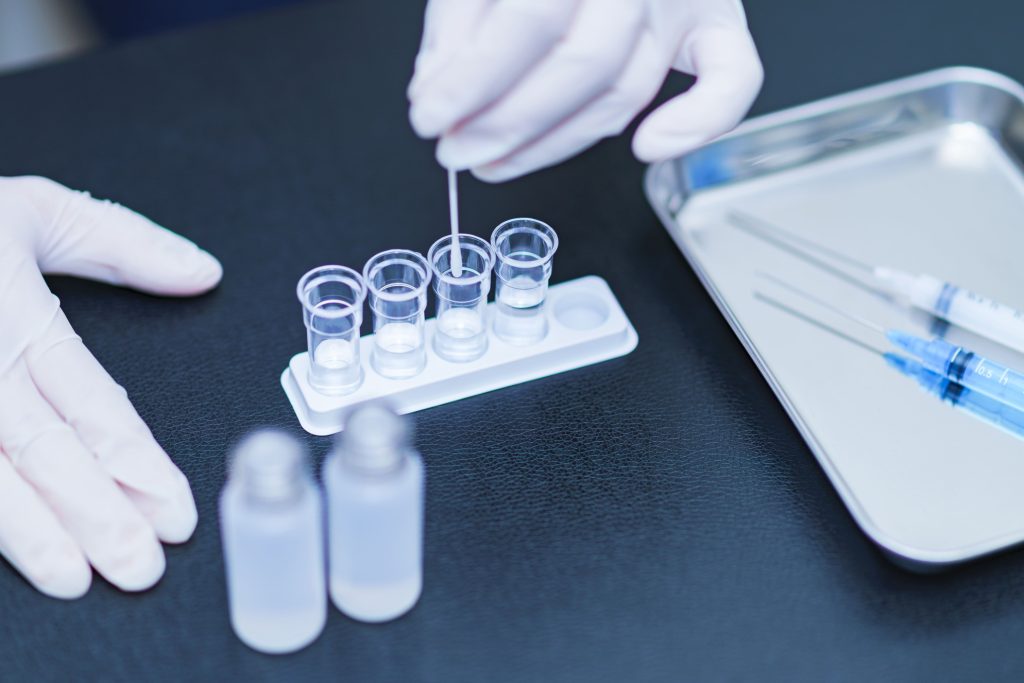
Phase 2
Moving seamlessly from the successes of Phase 1, Phase 2 stands as a pivotal milestone in the clinical trial journey. It paves the way for a deeper understanding of a drug’s effectiveness. In this critical phase, the primary focus shifts to determining the efficacy of the new treatment. Moreover, it further evaluates its safety within a larger group of participants. It typically ranges from several dozen to about 300 individuals. This cohort of participants is usually composed of patients who have the condition that the new medication is intended to treat. Here, researchers start to compare the therapeutic effects of the drug against existing treatments or placebos. It allows for refined dosage levels based on efficacy and side-effect profiles. For patients and healthcare professionals eagerly awaiting breakthroughs, the outcomes of Phase 2 trials represent a beacon of hope. It is clarifying the potential benefits and risks of innovative treatments. It’s essential to keep informed about the latest clinical trial phases and developments. It gives knowledge that can empower decision-making and foster an understanding of the tireless progress in medical research. As Phase 2 unfolds, the data gathered sets a firm foundation for the expansive and more definitive Phase 3. It is slowly moving toward the final goal of entering the market and improving patient care. Building upon the importance of biomarkers and assessments in phase 2 trials, it is vital to delve into the specifics of how these indicators can streamline the drug development process.
Phase 2 of clinical trials serves as a pivotal juncture where the therapeutic efficacy and safety profiles of new treatments are first evaluated in a patient population. The judicious selection of biomarkers – biochemical, genetic, or immunological markers indicative of a disease state or drug response. Those can drastically enhance the predictive power of these trials. By integrating cutting-edge imaging techniques, laboratory assessments, and clinical scoring systems, researchers can obtain a multifaceted perspective of a drug’s performance. Such comprehensive data not only accelerates the pathway to phase 3 but also facilitates a more targeted approach, potentially reducing time and costs associated with clinical development. The precision brought about by these assessments ensures that only the most promising of interventions advance. Thereby safeguarding patient welfare and optimizing resource allocation within the competitive landscape of pharmaceutical research.
The initial safety data garnered from Phase 1 trials, mark a pivotal step in the clinical research journey by significantly broadening the participant demographic. Here, the focus shifts towards evaluating the efficacy of the treatment, while continuing to monitor its safety profile within a larger group of individuals. Typically, this phase encompasses several hundred participants who are living with the condition that the new medication or treatment is intended to manage. Through a controlled and closely supervised environment, researchers gather more robust data regarding the drug’s therapeutic effect, and optimal dosing ranges, and continue to track any adverse reactions with increased statistical power. This expansion is crucial in determining the medication’s potential for real-world application. It sets the stage for even larger-scale testing in subsequent phases. The successful execution of Phase 2 trials is a key milestone in the drug development pipeline, propelling promising treatments closer to those in need.
Phase 2 trials are designed to provide preliminary data on the effectiveness of a drug or treatment. It is also continuing to evaluate its safety. Through the collection of this data, researchers can iterate on dosing regimens, patient selection criteria, and even treatment administration methods. This iterative loop is vital for fine-tuning the therapeutic intervention before it advances into the larger-scale Phase 3 trials. By consistently analysing and adapting, medical professionals can maximise the efficacy of a treatment. It is not only a boon for patient outcomes but also enhances the potential for the success of the drug in the competitive pharmaceutical market. As such, patients and stakeholders keenly follow the updates from these trials. They understand that each step is a progression towards more effective and personalised healthcare solutions. In this critical stage, biomarkers serve as vital indicators of biological processes. They provide a measurable way to evaluate the therapeutic effects and potential side effects of a drug. They are instrumental in refining dosing regimens and identifying the most suitable patient populations for further study.
As clinical trials move forward, researchers rely on an array of sophisticated assessments. Those include imaging, genomics, and blood tests – to construct a robust foundation for decision-making in phase 3. By integrating these scientific measures, phase 2 contributes to the intricate tapestry of clinical research. It is accelerating the journey of promising compounds from the lab bench to the patient’s bedside. Emphasising the importance of these evaluations not only supports the integrity of clinical trial outcomes. It also guides healthcare professionals and stakeholders through the complex landscape of drug development.
Phase 3 of clinical trials
In Phase 3, a larger patient population from diverse demographics are monitored to identify any rare or long-term adverse events. This stage is pivotal for satisfying regulatory agencies. It provides healthcare professionals with the necessary information for prescribing guidelines. As such, individuals and stakeholders interested in the medical field need to stay updated on the latest outcomes and advancements from these trials. By offering insights into the conclusive testing phase of clinical research, we ensure the dissemination of vital data that could herald the introduction of life-changing treatments into the market. Following the trajectory of Phase 3 trials, the promise of novel therapies poised to address unmet medical needs. Examples of phase 3 of clinical trials:
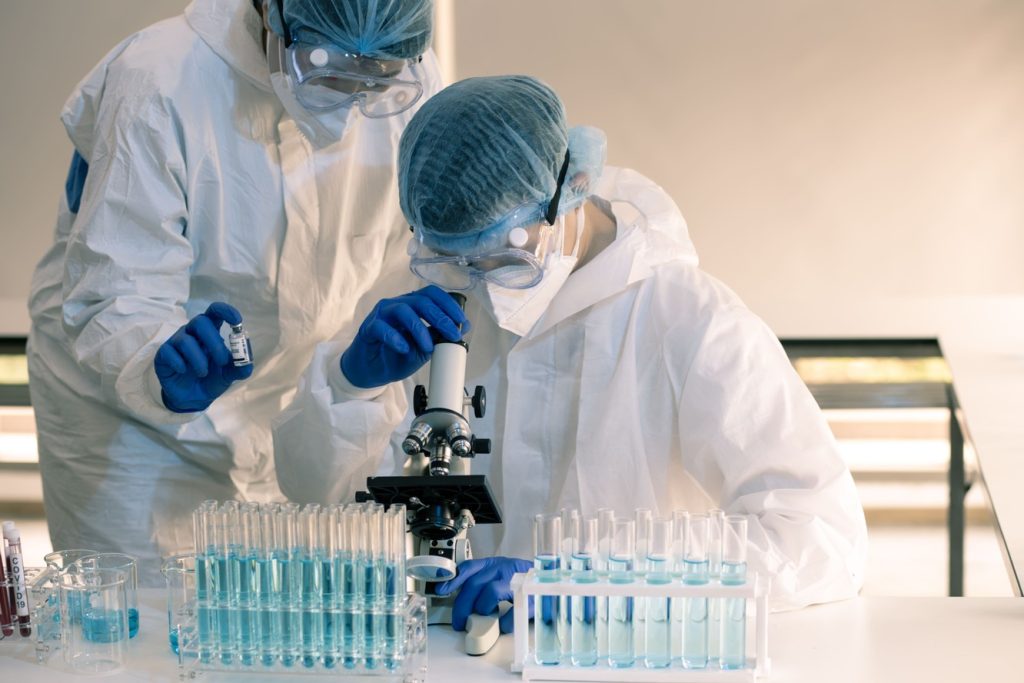
- Trials for new cancer medications. An example is the Phase 3 clinical trial of a novel immuno-oncology drug designed to target and inhibit cancer growth. Through this trial, researchers evaluate the drug’s efficacy and safety in thousands of patients. It may lead to a breakthrough in cancer treatment.
- Heart disease treatment developments. A recent Phase 3 trial focused on a new cholesterol-lowering drug that could significantly reduce the risk of heart attacks and strokes. Such trials are critical for determining the long-term benefits and potential side effects in a diverse patient demographic.
- Clinical studies for Alzheimer’s Disease. Progressive treatments for Alzheimer’s undergo Phase 3 to optimise dosage and understand the implications of long-term use. It offers hope for patients and caregivers grappling with the impact of this degenerative disease.
- Vaccine efficacy and safety. The global COVID-19 pandemic saw numerous vaccines enter Phase 3 at an unprecedented pace. Their goal was to establish not only effectiveness but also to monitor for any adverse reactions across diverse populations.
- Gene therapy for rare genetic disorders. With the advent of gene therapy, Phase 3 are pivotal in demonstrating long-term safety and efficacy for conditions that currently have limited treatment options. It potentially transforms lives by addressing previously unmet medical needs.
- Advanced treatments for diabetes. Diabetes treatments are continuously evolving. Phase 3 for a new insulin analogue would offer insights into its performance across a range of patients. It would potentially improve glycemic control and reduce diabetes-related complications.
- New antidepressants on the horizon. Mental health treatments are in the spotlight. Phase 3 evaluates the efficacy of new antidepressants, particularly for treatment-resistant depression. It could significantly impact the way mental health conditions are managed.
These examples underline the critical nature of Phase 3 in the progression of medical science. It details not just the broad-spectrum safety and efficacy of potential treatments, but also their long-term outcomes and impact on specific patient populations.
Phase 4
Following the rigorous testing that medications undergo in Phase 1 to 3 trials, Phase 4 becomes imperative as the final safeguard in the pharmaceutical development process. As medicines enter the market, ongoing safety monitoring, often referred to as post-marketing surveillance, is critical. It is identifying any long-term or rare side effects not previously detected. Phase 4 thus holds a pivotal role in the lifecycle of a drug, continuing to assess the risk-benefit profile. It also ensures that any emerging issues can be promptly addressed. These trials involve broader population groups over extended periods. It provides a more comprehensive understanding of how a drug performs in the real world. By diligently capturing data from patients across various demographics, healthcare providers can make more informed decisions. Regulatory authorities can fine-tune their recommendations or intervene if necessary. Engaging actively with Phase 4 not only exemplifies a commitment to patient safety but also reinforces the trust in pharmaceutical products. Although they have already achieved market approval. As vigilance in drug assessment continues beyond initial approval, the healthcare community and patients alike can take comfort in the knowledge that the safety of medications remains a top priority.
In the dynamic landscape of healthcare, the significance of these post-approval studies cannot be overstated. Phase 4 is designed to track the long-term effects of pharmaceutical products. It pays special attention to any rare or late-appearing side effects. This phase involves a diverse cross-section of the population. It helps in assessing how different demographic groups respond to the medication over a more extended period. Such extensive data collection is invaluable for healthcare professionals. It offers deeper insights that guide better patient care practices. Furthermore, the data from Phase 4 enable regulatory authorities to refine dosage recommendations and update guidelines, thereby enhancing drug safety profiles. In some instances, this ongoing research can lead to the identification of additional therapeutic uses for the medication. It can broaden the scope of treatment options available to patients. For those who seek reassurance about the medicines they use, Phase 4 of clinical trials offers peace of mind. They are the continued promise from the pharmaceutical industry that the medicines on the market meet the highest standards of safety. By actively participating in these trials, patients contribute to the shared goal of safer medications and a healthier society.
How are Clinical Trial results used to improve treatment?
Building upon the valuable insights gained from trial outcomes, the subsequent phase of enhancing therapeutic approaches takes centre stage. This critical juncture sees the translation of data into actionable strategies. They aim to refine patient care. Medical professionals and researchers pore over the results. They are identifying potential improvements or confirming the efficacy of a new treatment. Furthermore, it’s not just healthcare providers who benefit. Regulatory authorities scrutinize these findings to inform guidelines and approve novel interventions. They are ensuring that patient treatment protocols incorporate the latest, evidence-based medical advancements. As such, publicizing these developments is integral for both. Informed healthcare decisions and fostering trust in the clinical trial process. By sharing success stories and discussing the tangible benefits of clinical trials, we can demystify the journey from research to recovery. We can empower patients with knowledge about cutting-edge treatment options at their disposal.
Duration of clinical trials
Accurate estimation of clinical trial timelines is impacted by multiple factors. It includes participant recruitment rates, the complexity of study protocols, and the necessity for longitudinal follow-up to ascertain long-term impacts and benefits. Additionally, external influences such as regulatory changes, funding shifts, and public health emergencies can significantly alter the anticipated progress of a trial. Understanding these steps is key for stakeholders and potential participants who seek clarity on the journey from the laboratory to the pharmacy shelf. For pharmaceutical companies, researchers, and healthcare professionals, offering transparent insights into trial durations reinforces the trust and engagement of a broader audience. The aim is to enhance the public’s understanding of the dedication required to bring new therapies to the market.
Examples of duration of clinical trials
- Preclinical Testing (1–6 years):
– Before human trials can begin, potential new therapies undergo rigorous preclinical testing in laboratories for several years to assess their safety and biological activity.
- Phase 1 (several months to 2 years):
– This initial phase of testing in humans focuses on a small group of healthy volunteers to evaluate the safety, tolerable dosage range, and side effects of the medication, which can take months to a couple of years.
- Phase 2 (Up to 2 years):
– Involving a larger patient group, phase 2 trials aim to provide preliminary data on the drug’s effectiveness while continuing to evaluate its safety, which can extend the trial period to two years or more.
- Phase 3 (1–4 years):
– With an even larger patient population, phase 3 trials are critical for assessing efficacy on a broad scale, and determining the overall risk-benefit ratio of the therapy, thus constituting a significant portion of the clinical trial timeline.
- Regulatory Review and Approval (6 months to 2 years):
– Once all trial phases are completed, a comprehensive dossier is submitted to regulatory authorities for review. This step alone can span from several months to over a year, depending on the complexity of the data and the therapeutic area.
- Phase 4 – Post-Marketing Surveillance (Variable duration):
– After a drug is approved and reaches the market, post-marketing studies monitor long-term efficacy and safety, adding to the cumulative duration but also to the overall understanding of the drug’s profile in the general population. The development of new therapies is a time-intensive sequence that spans many years. Preclinical testing initiates the multi-stage process, potentially taking up to six years. The transition to human testing begins with Phase 1 and can last several months to two years. Phase 2 extends to another possible two years, with additional patient involvement. The critical Phase 3 could require one to four years to assess broad efficacy. Following these phases, regulatory review may demand up to two years before approval. Finally, Phase 4’s indefinite duration continues as long as the drug remains on the market, ensuring ongoing safety and efficacy. Collectively, these phases represent a substantial investment in time to ensure therapies are safe and effective before reaching the public.

Why join a clinical trial?
Joining a clinical trial can offer patients access to cutting-edge treatments before they are widely available. They provide a potential lifeline to those who may have exhausted standard options. By participating, you’re not only receiving care from top medical professionals but also contributing to important research. It can shape the future of medicine and improve outcomes for others. Beyond the hope for personal health benefits, volunteers in clinical trials play a crucial role in advancing medical knowledge and innovation. This altruistic aspect can provide a sense of purpose and community. Patients and researchers work together towards a common goal: to find better ways to prevent, diagnose, and understand human disease. With stringent ethical and safety protocols in place, joining a clinical trial is a well-considered decision. It could pave the way for breakthroughs in healthcare. If you’re looking to be at the forefront of medical research and potentially benefit from new therapies, exploring the possibility of enrolling in a clinical trial could be a wise step forward.
- Early access to innovative treatments.
- Clinical trials may provide participants with the opportunity to receive new therapies that are not yet available to the general public.
- High-quality medical care.
- Patients in clinical trials are often closely monitored and receive care from specialised medical teams and experts in their condition.
- Contributing to medical advances.
- By participating in a trial, volunteers help gather valuable data that could lead to improvements in how diseases are treated in the future.
- Potential personal health benefits.
- Although not guaranteed, there is a possibility that being part of a trial could lead to personal health improvements if the treatment is effective.
- Helping others in the long term.
- The insights and results obtained from clinical trials can contribute to better treatments and outcomes for future patients.
- Being part of a supportive community.
- Involvement in a clinical trial can foster a sense of belonging among participants. They bond over their shared experiences and dedication to the cause.
- High standards of safety and ethics.
- Clinical trials must adhere to rigorous ethical standards and safety measures to protect participants They can offer reassurance to those considering enrollment.
- Psychological benefits from altruism.
- Knowing that one’s participation is aiding in the progression of medical science can provide a deep sense of satisfaction and purpose.
- Access to potential cost savings.
- Some clinical trials may offer financial benefits in the form of free or subsidised medical treatment, travel expenses, and other patient care costs.
- Being an active participant in your own healthcare.
- Joining a clinical trial allows individuals to take an active role in their health journey.
Summary
Clinical trials play a pivotal role in advancing medical science. They are serving as the vital link between innovative research and tangible patient care. This comprehensive exploration of clinical trial phases. From the initial safety assessments in Phase I to the large-scale efficacy evaluations in Phase III. The post-marketing surveillance of Phase IV, underscores the important journey that new treatments undergo before reaching the public. Emphasizing the significance of volunteer participation, the article highlights the potential benefits for individuals. It ranges from early access to groundbreaking therapies to high-quality medical care.
FAQs
What is the purpose of a clinical trial?
To assess the safety, efficacy, and effectiveness of a new drug, treatment, or medical device on humans.
Who can participate in a clinical trial?
Participation depends on specific inclusion and exclusion criteria, which vary by trial.
Are clinical trials safe?
Clinical trials involve risks, but they are conducted under stringent ethical and regulatory oversight to ensure participant safety.
How are participants protected during a clinical trial?
Through informed consent, regulatory safeguards, monitoring by ethics committees, and adherence to good clinical practices.
What happens after a clinical trial is completed?
The data is analysed, results are published, and successful treatments may be submitted for regulatory approval.




